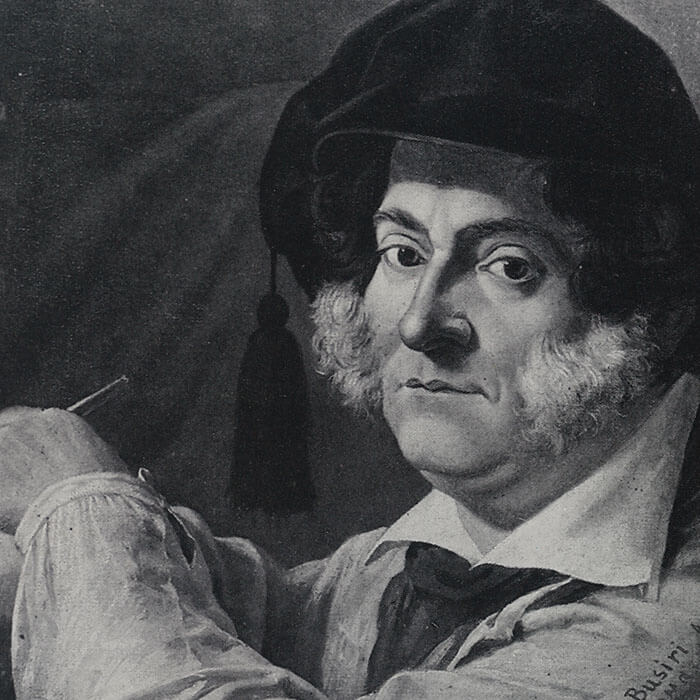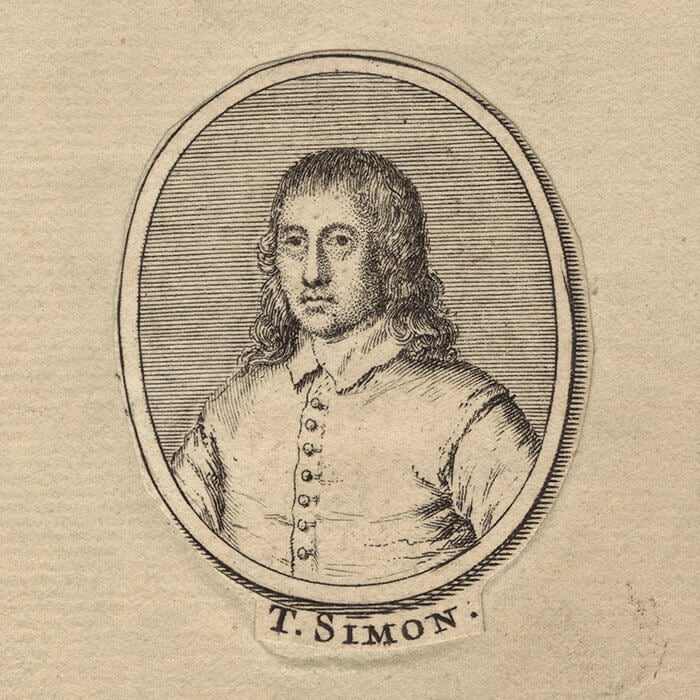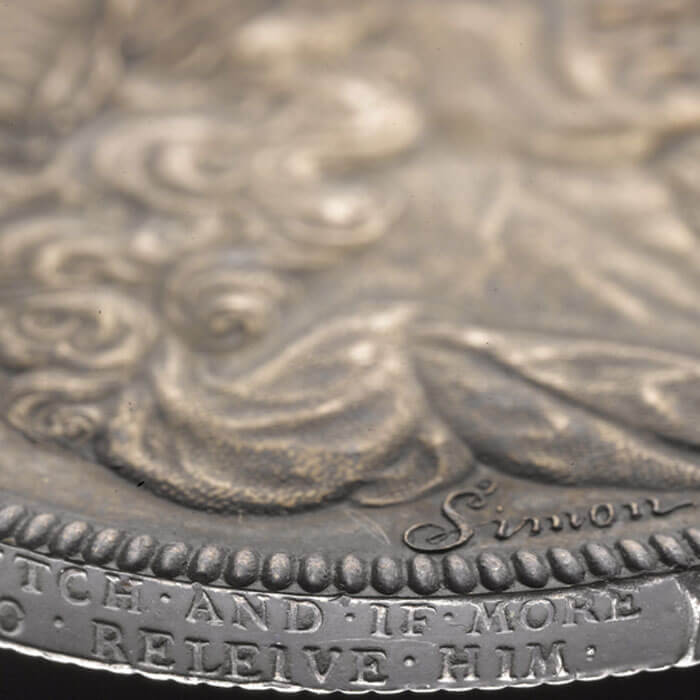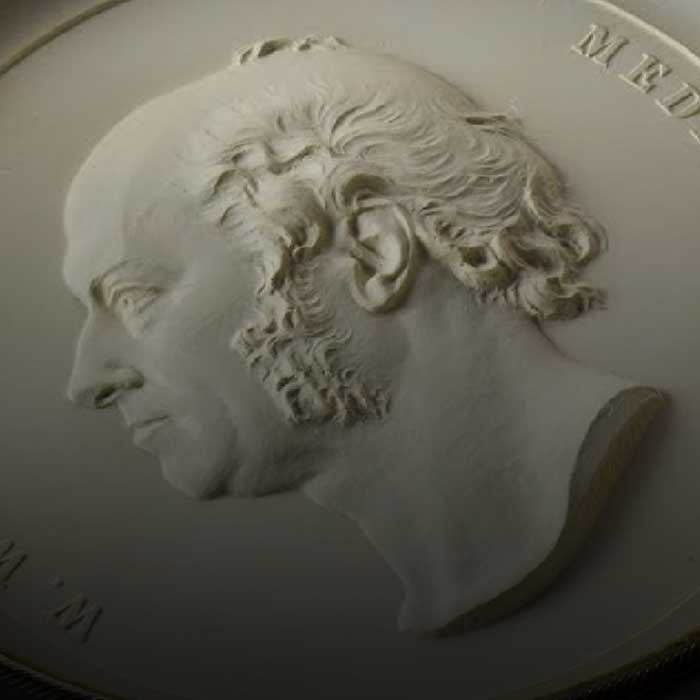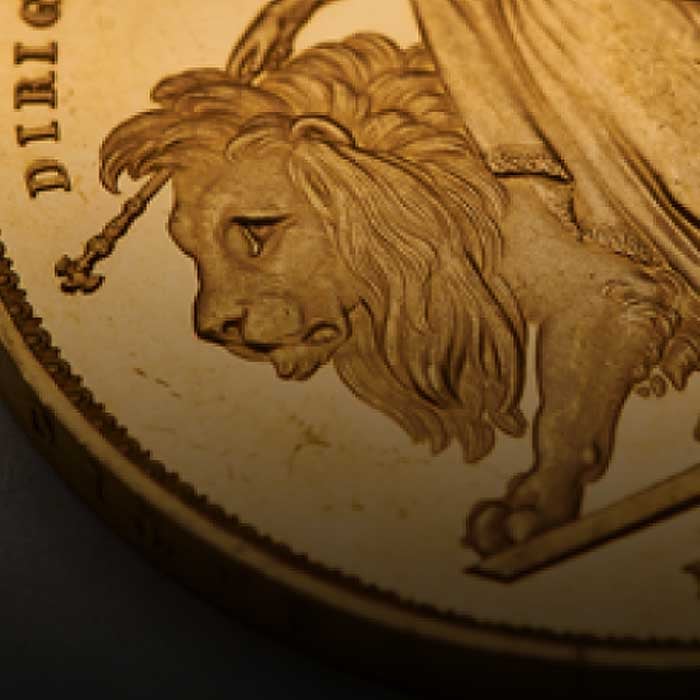
However, there were also external factors that influenced the painstakingly slow progress of the highly anticipated medallion. Despite assuming the responsibilities of Chief Engraver and carrying out many of the duties associated with the role, Pistrucci could never fulfil the role in an official capacity due to a law decreed by William III, which debarred a foreigner from assuming the position. His frustration was further exacerbated when William Wyon, who once served as Pistrucci’s junior, assumed the role of Chief Engraver, with the Italian given the position of Chief Medallist.
Embittered at what had occurred, Pistrucci played an active role in slowing the work on the medal to ensure his financial security, despite insisting to William Gladstone, then Master of the Mint, ‘it is impossible there can be in this world any one individual more anxious than myself, to see the Waterloo Medal finished’.
Thirty Years in the Making

Following a suggestion from his younger brother, the Duke of Wellington, William Wellesley Pole approached Pistrucci to create designs for a medal commemorating the Battle of Waterloo. The work began in 1819 but it wasn’t until 1849 that the dies were delivered to The Royal Mint. They were so large they couldn’t be hardened, so the medal was never physically struck, and the electrotypes were the only fruit of Pistrucci’s 30-year labour.
Nevertheless, these electrotypes bore the medal’s design, which is one of inimitable intricacy and consummate detail. Layered with allegorical meaning, the artist has interpreted the Battle of Waterloo through a classical lens, as the design entwines gods and figures from Greek mythology with the events of the battle itself.
The Reverse
When Kronos, the power-hungry Titan, overthrew and castrated his father, Ouranos, a race of giants was spawned by Gaia from falling droplets of the primordial god’s blood. Aggressive and bloodthirsty, the giants (or ‘Gigantes’) waged war upon the gods of Olympus in a conflict known in Greek mythology as the Gigantomachy. Eurymedon, king of the giants, led this uprising against the gods who, under the command of Zeus (the Roman Jupiter), successfully defended their rule of the cosmos.

Pistrucci took inspiration from this mythological event to form the border of his reverse design for the Waterloo Medal, in which 19 giants represent the duration of the war. Modern accounts tend to date the beginning of the conflict as 1799 or 1803; however, the 19-year period Pistrucci acknowledges stems from 1796, when Napoleon Bonaparte launched his first campaign in Italy.

The king of the gods drives a quadriga (a car or chariot) as he wreaks divine punishment upon the giants, each depicted with serpents for legs. Symbolising the confusion and demise of the defeated enemy, the giants are portrayed tumbling over one another after they have been struck by Jupiter’s thunder.

In the centre of the design, two equestrian figures are depicted in a classical style, bearing the features of the Duke of Wellington and General Blücher galloping towards glory, as they are guided by the figure of a flying Victory.


